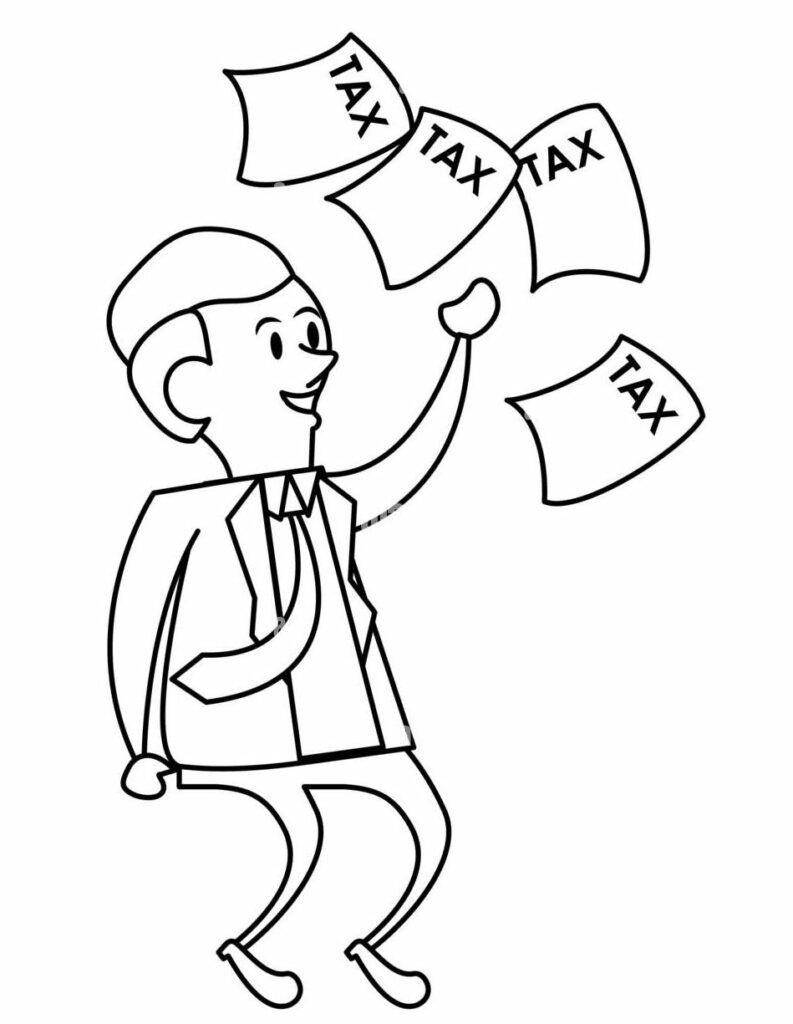Today, we’re going to be talking about something that might not sound too exciting at first – tax brackets in the UK. But bear with me, because understanding how tax brackets work can actually be pretty useful. Plus, I promise to make it as painless as possible.
So, without further ado, let’s dive in and learn a little more about tax brackets in the UK.
Okay, let’s start with the basics. What exactly are tax brackets?
In a nutshell, tax brackets are a way to divide up different levels of income and apply a specific tax rate to each bracket. So, if you fall into a certain income range, you’ll be taxed at a certain percentage.
But why do we have tax brackets in the first place? Well, the idea is to make the tax system more progressive, meaning that people who earn more pay a higher percentage of their income in taxes. It’s kind of like a sliding scale – the more you earn, the more you pay.
Now, it’s important to note that tax brackets only apply to your taxable income, which is your total income minus any deductions or exemptions you’re entitled to. But we’ll get more into that later.
So, to sum it up, tax brackets are used to determine how much tax an individual or business must pay on their income. Make sense? Great, let’s move on.
Current tax brackets in the UK
Alright, now that we have a basic understanding of what tax brackets are and how they work, let’s take a look at the current tax brackets in the UK.
First up, we have the basic rate tax bracket, which applies to income up to £50,270. For this bracket, the tax rate is 20%.
Next, we have the higher rate tax bracket, which applies to income between £50,271 and £150,000. For this bracket, the tax rate is 40%.
Finally, we have the additional rate tax bracket, which applies to income over £150,000. For this bracket, the tax rate is 45%.
Now, it’s worth noting that these tax rates and income ranges are subject to change. In fact, the basic rate tax bracket used to apply to income up to £37,500, but that threshold was increased to £50,270 in April 2021.
So, it’s always a good idea to stay up to date on any changes to the tax brackets, as they can have a big impact on your tax bill.
Alright, that’s a quick overview of the current tax brackets in the UK. Next up, let’s talk about how these tax brackets can affect the amount of tax you pay.
How tax brackets impact your tax bill
So, now that we know what the tax brackets are in the UK, let’s talk about how they can impact your tax bill.
To give you an idea of how tax brackets work, let’s use an example. Let’s say you earn £60,000 per year. Based on the current tax brackets in the UK, this means you’ll fall into the higher rate tax bracket, which has a tax rate of 40%.
Now, here’s where things can get a little confusing. You won’t be taxed at a flat rate of 40% on your entire £60,000 income. Instead, you’ll only be taxed at 40% on the income that falls within the higher rate tax bracket. In this case, that would be the amount of income over £50,270 (which is the upper threshold for the basic rate tax bracket).
So, let’s do the math: £60,000 (total income) – £50,270 (upper threshold of basic rate tax bracket) = £9,730 £9,730 x 40% (higher rate tax bracket) = £3,892 in taxes
So, in this example, you would owe £3,892 in taxes for the year.
I hope that helps clarify how tax brackets work and how they can impact your tax bill. It can be a little tricky to wrap your head around at first, but it’s actually not that complicated once you get the hang of it.
Next up, let’s talk about some other factors that can impact your tax bill.
Other factors that impact your tax bill
In addition to tax brackets, there are a few other factors that can impact the amount of tax you pay.
One of these factors is deductions. Deductions are expenses that you can subtract from your taxable income to lower your tax bill. Some common deductions include charitable donations, business expenses, and mortgage interest.
Another factor that can impact your tax bill is exemptions. Exemptions are amounts of income that you don’t have to pay taxes on. For example, in the UK, you’re allowed to earn a certain amount of income tax-free each year. This is called the personal allowance.
So, how can these deductions and exemptions be used to lower your tax bill? It’s actually pretty simple. The more deductions and exemptions you claim, the lower your taxable income will be. And as we learned earlier, the lower your taxable income, the lower your tax bill.
It’s worth noting that there are limits to how many deductions and exemptions you can claim, and the rules can be complex. But if you’re savvy about claiming deductions and exemptions, it can make a big difference in the amount of tax you have to pay.
Alright, that’s a quick overview of some of the other factors that can impact your tax bill. Up next, let’s wrap things up with a conclusion.
Conclusion
Well, that’s it for this week’s blog post on tax brackets in the UK. I hope you found it informative and helpful.
If you have any further questions or want to learn more about tax brackets and how they apply to your personal or business situation, it’s always a good idea to consult with a tax professional. They’ll be able to provide you with personalized advice and help you understand how tax brackets and other factors impact your tax bill.
Alternatively, there are also plenty of online resources available that can help you understand how tax brackets work and how to minimize your tax bill.
Thanks for reading, and I hope you have a better understanding of tax brackets in the UK.

